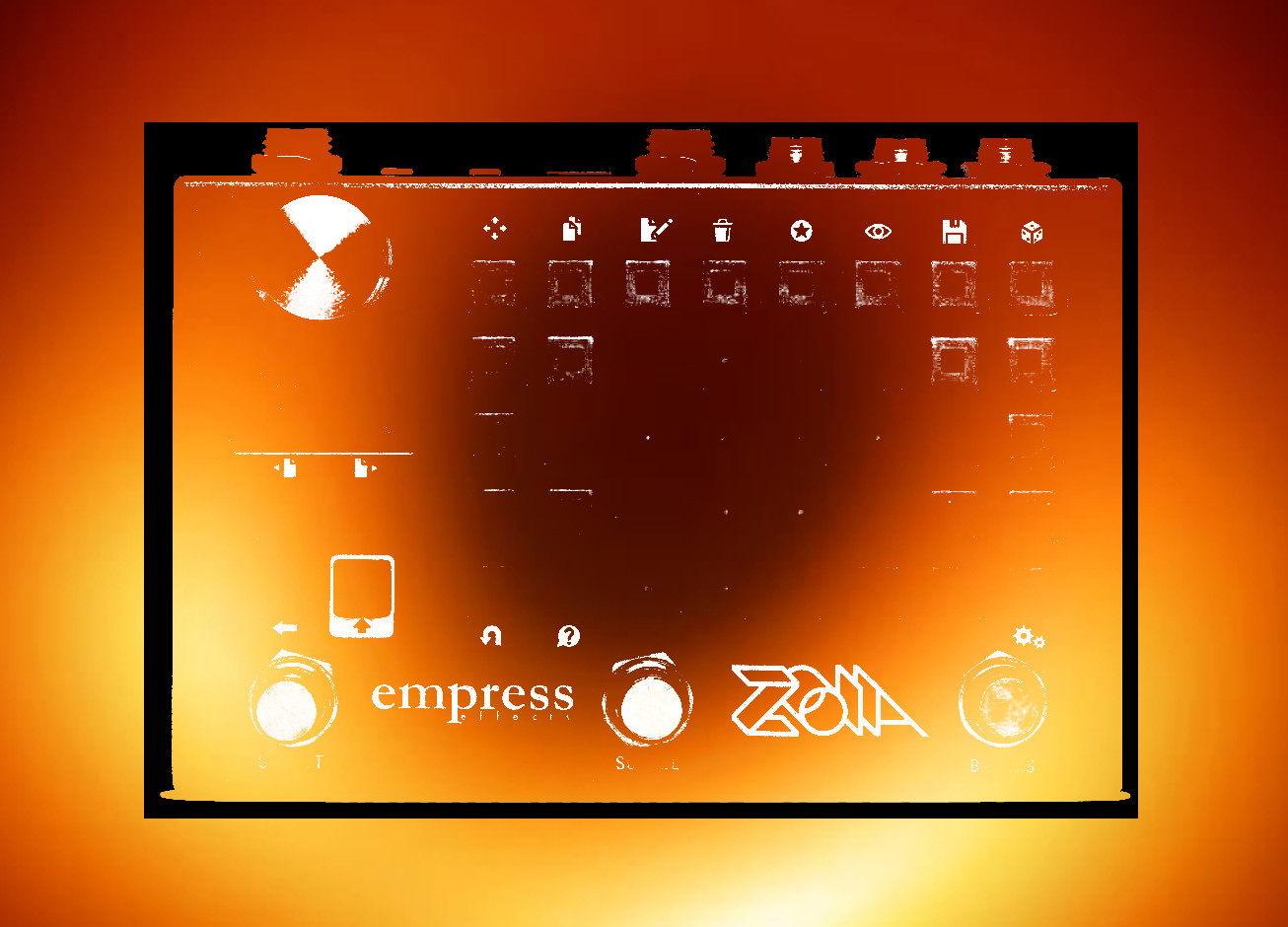Inspired by and named for an ancient ocean whose last vestiges exist in briny pockets beneath my native West Virginia, Iapetus fades between two, radically different reverb sounds.
To represent the clear air of Appalachia above Iapetus, a hall reverb, open and bright. To represent the ancient, hidden sea, this bright reverb fades into a darker plate reverb, fed by bit crushers to create a noisy wash and distortion, and a granular module providing sub octave depths. The plate reverb is set to a long decay, allowing sounds to build and slowly shift. An LFO modulates between the two settings, slowly fading from one to the other, the noise and depths carried by Iapetus much like waves upon a beach.
Although I might do a more complicated patch based on cross-fading reverbs, this one is meant more as a “preset” than a lot of my patches, so there’s not a ton to tweak. I initially moved the reverbs’ tone controls to the front page, but the patch _really_ did not like that (I’m almost certain the tone controls are built around the multi-filter module, and the multi-filter hates being “modulated,” even by a value control set to a static value, it seems).
The signal path is stereo throughout.
A special thanks to my patrons on Patreon for their support: Rob Flax, Stepan Grammatik, brockstar, Mats Unnerholm, D Sing, Will Scott, drew batchelor, Miguel, Steve Bragg, Joab Eastley, Tomi Kokki, Mitch Lantz, Ben Norland, Daniel Morris, Roman Jakobej, Mark Crosbie, and Steve Codling!
If you would like to support my work on ZOIA, please visit patreon.com/chmjacques
Controls:
Stompswitches:
Left, latching — toggle between -12 and -7 semitones for the suboctave; the suboctave isn’t really about “pitchshifting”: it is “felt” more than “heard,” adding weight to the voice, and the difference between the two options is rather subtle
Middle, latching — changes the reverbs’ decays from “real long” to “maximum”; for the Iapetus/plate reverb, sounds will continue to accumulate and gain will slowly build in this setting
Right, latching — turns off mix modulation; useful if you wanted to run the reverbs in parallel for instance, or just use the “Iapetus”/plate ‘verb (you could do the same with the “West Virginia”/hall ‘verb, but it’s pretty much just a hall ‘verb)
Each of the stompswitches has a corresponding light above it that designates on/off status.
Front panel:
Reverb mix — controls the mix between the West Virginia/hall voice, and the Iapetus/plate voice
Depth — depth can swing positive or negative as it modulates between the two reverbs, allowing you to weigh one reverb more heavily than the other; it can also be turned off, using the right stompswitch or by setting the depth to 0, allowing the reverbs to run in parallel
Rate — controls the rate of the fading; the range of the LFO goes from really, really slow to slow, since that’s sort of the sound
Bitcrush level — controls the amount of bit-crushing applied to the Iapetus voice; at its lowest setting, the bit crushing is negligible, at its highest setting it is just below “mayhem”; I like it ~.6-.7 or so
Mix — controls the wet/dry mix


